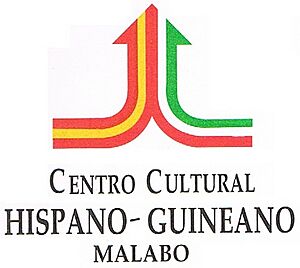Treaty of Friendship and Cooperation between Spain and Equatorial Guinea of 1980 facts for kids
| Type | Bilateral treaty |
|---|---|
| Signed | October 23, 1980 |
| Location | Madrid, Spain |
| Signatories | José Pedro Pérez-Llorca Florencio Mayé Elá |
| Parties | |
| Language | Spanish |
The Treaty of Friendship and Cooperation between Spain and Equatorial Guinea is an important agreement. It was signed on October 23, 1980, in Madrid, Spain. This treaty is a bilateral treaty, meaning it's an agreement between two countries.
The people who signed it were Florencio Mayé Elá from Equatorial Guinea and José Pedro Pérez-Llorca from Spain. Florencio Mayé Elá was the First Vice President and Minister of Foreign Affairs for Equatorial Guinea. José Pedro Pérez-Llorca was the Minister of Foreign Affairs for Spain. This treaty was officially published on July 27, 1981.
History
Why the Treaty Was Needed
After a difficult time in 1969, the relationship between Spain and Equatorial Guinea became distant. Even though some agreements were signed in 1969 and 1971, the leader of Equatorial Guinea at the time, Francisco Macías Nguema, stopped all official contact with Spain.
Both countries then went through big political changes. In Spain, Francisco Franco passed away in 1975. This led to Spain becoming a democracy with a king, Juan Carlos I of Spain, and a new government.
In Equatorial Guinea, a change in leadership happened in 1979. This led to Teodoro Obiang Nguema Mbasogo becoming the new leader. These changes allowed Spain and Equatorial Guinea to start talking and working together again.
On October 31, 1979, they signed a cooperation agreement. This was the first time they had signed such an agreement since 1971. More agreements about money and other plans followed in December 1979.
In 1980, before the main Treaty was signed, seven more agreements were made. These included allowing a Spanish university, the National University of Distance Education (UNED), to have centers in Malabo and Bata.
Later, in 1982, a special place called the Centro Cultural Hispano-Guineano was opened. This center worked for twenty years to promote culture and learning. It later became the Centro Cultural de España in Malabo (2003) and Bata (2001).
What the Treaty Said
The Treaty started by talking about the problems caused by the previous leader, Macías. It showed that both countries wanted to fix things. The Treaty stated:
Considering:
That after the political change recorded on 3 August 1979, the new Government of the Republic of Equatorial Guinea addressed the Government and the Spanish people requesting their help in rebuilding the country
That relations between Spain and the Republic of Equatorial Guinea, always based on non-interference in domestic politics, then began a new stage, characterized by a profound desire for Cooperation
—Treaty of 23 October 1980 on Friendship and Cooperation
between the Kingdom of Spain and the Republic of Equatorial Guinea
Introduction
This part means that Equatorial Guinea asked Spain for help to rebuild the country after the political changes. It also shows that both countries wanted to work together and respect each other's internal affairs.
After the Treaty was signed, Spain and Equatorial Guinea created several joint companies. These companies were owned half by Spain and half by Equatorial Guinea. Some examples include:
- GEPSA: A company for oil, with help from a Spanish oil company called Hispanoil.
- GEMSA: A company for minerals.
- Guinextebak: A bank.
- CETA: An airline company.
- OFICAR: A company for city bus transport.
A few weeks after the Treaty, the leader of Equatorial Guinea, Obiang, visited France. Soon after, the King of Spain, Juan Carlos I, visited Gabon and Cameroon, stopping in Equatorial Guinea in December.
See also
 In Spanish: Tratado de Amistad y Cooperación entre España y Guinea Ecuatorial de 1980 para niños
In Spanish: Tratado de Amistad y Cooperación entre España y Guinea Ecuatorial de 1980 para niños
- Equatorial Guinea–Spain relations


